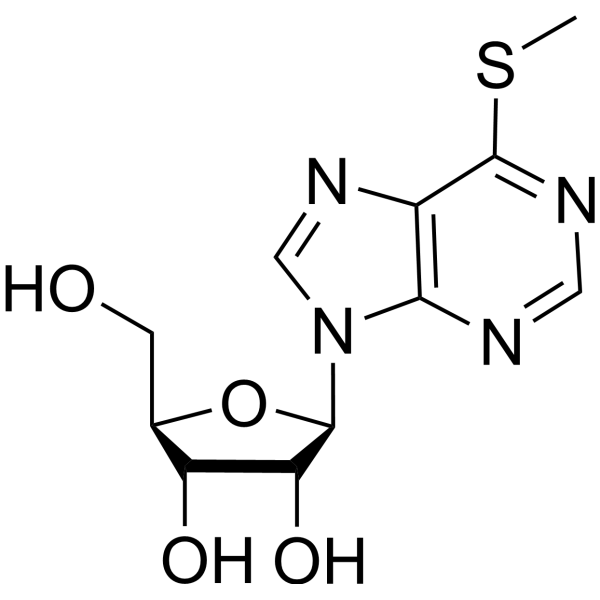Thiopurines inhibit bovine viral diarrhea virus production in a thiopurine methyltransferase-dependent manner.
Spencer Hoover, Rob Striker
文献索引:J. Gen. Virol. 89 , 1000-1009, (2008)
全文:HTML全文
摘要
The family Flaviviridae comprises positive-strand RNA viral pathogens of humans and livestock with few treatment options. We have previously shown that azathioprine (AZA) has in vitro activity against bovine viral diarrhea virus (BVDV). While the mechanism of inhibition is unknown, AZA and related thiopurine nucleoside analogues have been used as immunosuppressants for decades and both AZA metabolites and cellular genes involved in AZA metabolism have been extensively characterized. Here, we show that only certain riboside metabolites have antiviral activity and identify the most potent known antiviral AZA metabolite as 6-methylmercaptopurine riboside (6MMPr). The antiviral activity of 6MMPr is antagonized by adenosine, and is specific to BVDV and not to the related yellow fever virus. An essential step in the conversion of AZA to 6MMPr is the addition of a methyl group onto the sulfur atom attached to position six of the purine ring. Intracellularly, the methyl group is added by thiopurine methyltransferase (TPMT), an S-adenosyl methionine-dependent methyltransferase. Either chemically bypassing or inhibiting TPMT modulates antiviral activity of AZA metabolites. TPMT exists in several variants with varying levels of activity and since 6MMPr is a potent antiviral, the antiviral activity of AZA may be modulated by host genetics.
相关化合物
| 结构式 | 名称/CAS号 | 分子式 | 全部文献 |
|---|---|---|---|
 |
6-(甲硫基)-9-β-D-呋喃核糖-9H-嘌呤
CAS:342-69-8 |
C11H14N4O4S |
|
The role of inosine-5'-monophosphate dehydrogenase in thiopu...
2011-04-01 [Ther. Drug Monit. 33 , 200-208, (2011)] |
|
Methylthioadenosine deaminase in an alternative quorum sensi...
2012-11-13 [Biochemistry 51(45) , 9094-103, (2012)] |
|
A prospective, open-label trial of 6-thioguanine in patients...
2005-10-01 [Scand. J. Gastroenterol. 40(10) , 1205-13, (2005)] |
|
Methylthioinosine phosphorylase from Pseudomonas aeruginosa....
2011-02-22 [Biochemistry 50(7) , 1247-54, (2011)] |
|
A thiopurine drug inhibits West Nile virus production in cel...
2011-01-01 [PLoS ONE 6(10) , e26697, (2011)] |